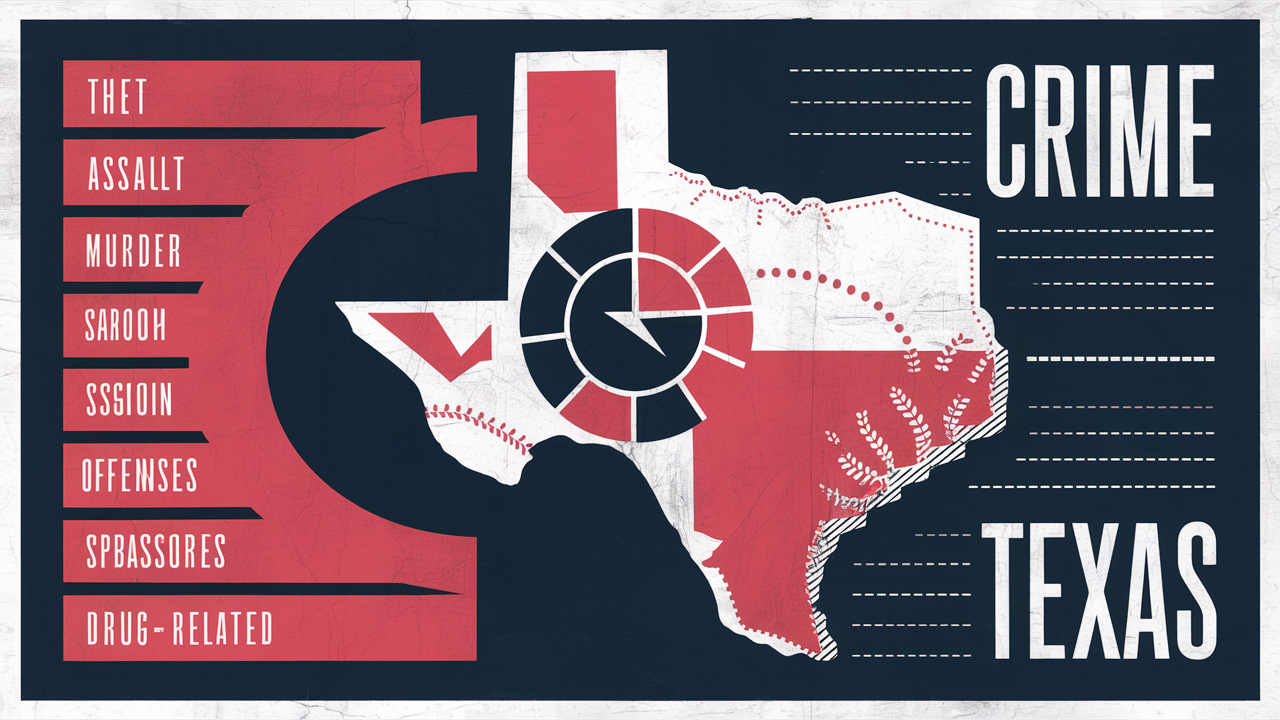With an estimated 29 million residents, Texas ranks second most populous state in the United States. Texas is no exception; debate abounds there as in all other states. Nonetheless, Texas is definitely among the safer states when compared to other big states and the national average, as has been observed already. Understanding crime hazards in Texas can help individuals and legislative bodies running the state to make appropriate judgments in the field of crime and justice.
Overall Crime Rate
Regarding crime rates, Texas and some of its big cities rank among the lowest in the nation. The FBI's 2020 UCR states that 2809 crimes were committed for every 1000 Texans. This is significantly lot better than what is seen in other heavily inhabited states like Florida, where the rate is 3,558 per 100,000. California, with a rate of 2,772 per 100,000 or even the average rate among the 50 states in America, with 2,958 per 100,000.
Texas's violent crime rate is on average in line with the national average; its property crime rate is below that level overall. This analysis reveals that, although the state does still have violent offenses, Texans have a below-average risk of having their property or goods stolen compared to the country as a whole.
The average violent crime across all the states was 398 per 100,000 population and the average rate of property crime was 2,559 per 100,000. Texas's property crime rate was thus 6% below the national average, whereas the level of violent crimes was very similar.
Homicide Rate Trends
Since homicide is a serious kind of crime, there is a justified public concern and policy focus towards it. According to the mentioned UCR for 2020, Texas had 6.5 murders per 100,000 people on average. From the 4.4 deaths per 100,000 recorded in 2019, this crime rate increased dramatically.
approximately, the homicide rate in Texas in the same year was 6.5 per 100,000 people, approximately 21% lower than the national average of 8.2 per 100,000 people in 2020. Texas also had a smaller homicide rate than many other big states the same year; for instance, Florida had a rate of 7.9 per 100,000 people while California had a rate of 6.4 per 100,000 inhabitants. The murder rate in Texas likewise showed the same pattern as it did rest of the United States in 2020. Still, the state has a lower murder rate than many other nations or areas throughout the globe.
The analysis of key Texas cities
Every city has different crime rates, hence it influences some areas more than others. Three of Texas's biggest metropolitan cities— Houston, San Antonio, and Dallas—contribute a sizable population and crime activity in the state. The relative crime rates of these communities provide yet another angle on safety issues Texas should take into account.
Houston: Comprising around 2.3 million people, Houston is the biggest city in Texas situated midway across the state. Houston ranks highly in violent and property crimes based on 2020 estimates with 1,026 per 100,000 people and 4,219 per 100,000 correspondingly. Moreover better than the state average were these rates. With a range of 11.8 to 20.3 murders per 100,000 residents, Houston can be considered one of the least safe major American cities based on present figures on the homicide rate.
San Antonio: San Antonio, which boasts a population of about 1.5 million, is the second-largest city in Texas. Although the property crime rate in 2020 was 3,263 per 100,000 people, violent crime was 600 per 100,000 people. San Antonio is among the largest cities in the country, hence these numbers are still below the state average even Though San Antonio is significantly above the pack in terms of crime rates and might use some changes, it is not far from many other nice cities.
Dallas:Dallas: With 1.3 million residents, it is only somewhat smaller than Houston but has stayed among the biggest cities in the globe in terms of population and economy. With 774 incidences per 100,000 Dallas citizens overall and a property crime rate of 3052 per 100,000, violent crime in the city in 2020 was at Dallas has dropped property crime rates below the state norm but raised violent crime rates beyond the state average, same as San Antonio. For example, Dallas has been among the largest Texas cities most frequently mentioned in high homicide counts.
Key Takeaways
While some metropolitan areas saw more crime, Texas's general crime rates in most categories are either lower or comparable to national averages and other big states. As shown by the national crime rate connected with the consequences of the COVID-19 epidemic, the general crime statistics did rise in 2020. Texas will be vital to keep crime rates low since it is predicted to get even more populated as well as experience more economic activity in the following decades. This would mean constant policy actions targeted at criminal control and prevention are necessary.


